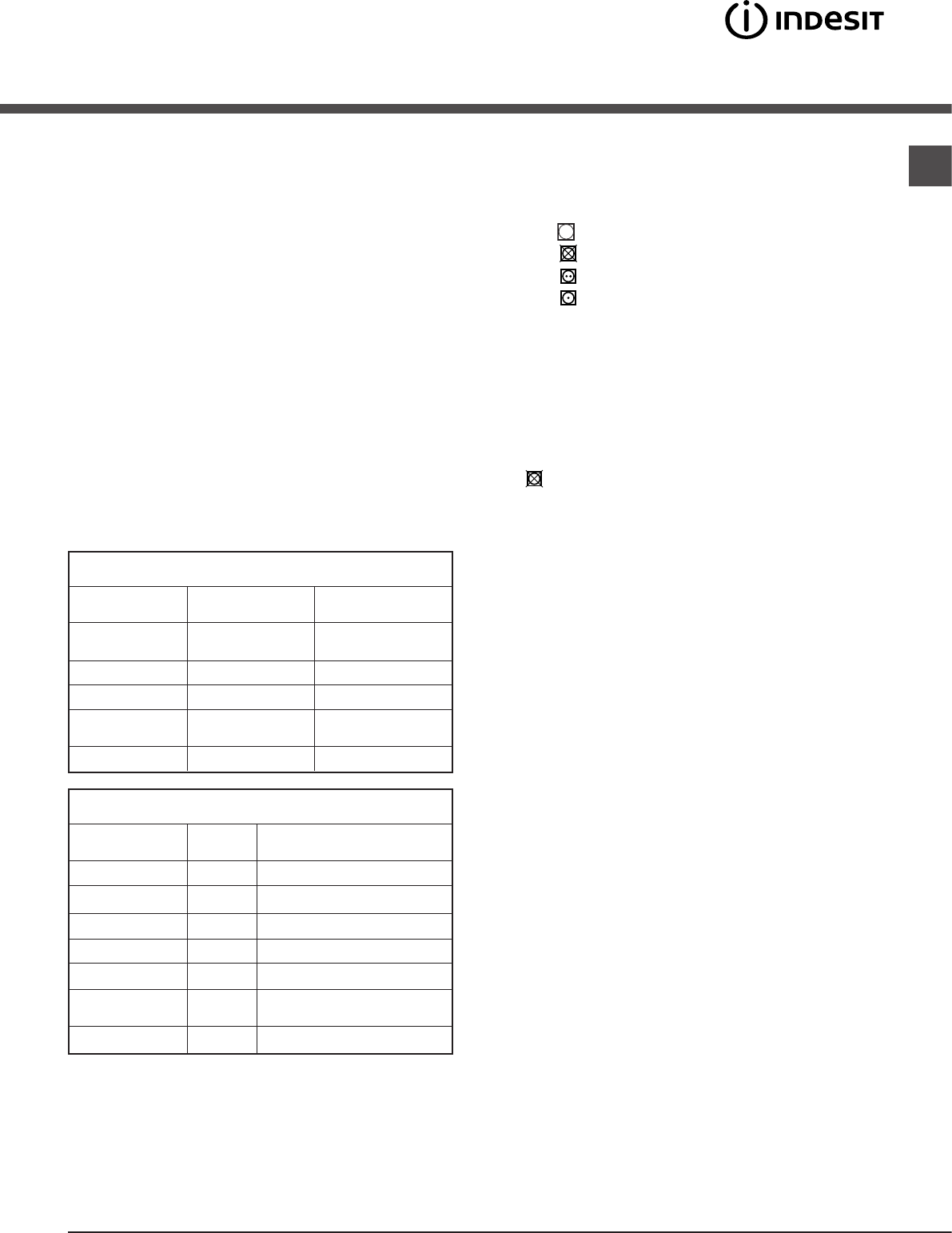
7
EN
Sorting laundry
• Check the symbols on the care labels of the various gar-
ments to verify whether the garments can be safely tumble
dried.
• Sort laundry according to the type of fabric.
• Empty all pockets and check for loose buttons.
• Close zips and hooks and fasten belts and strings without
tightening them.
• Wring out garments to remove the maximum amount of
water possible.
! Do not load the dryer when garments are dripping wet.
Maximum load sizes
Do not overload the drum.
The following values indicate the weight of dry garments:
Natural fibres: maximum 6 kg
Synthetic fibres: maximum 3 kg
! Do not overload the dryer as this may result is reduced
drying performance.
Typical weights
Note: 1 kg = 1000 g
When mixing synthetic fibres with cotton garments, the latter
may still be damp at the end of the drying cycle. If this hap-
pens, simply put them through a short drying cycle.
Care labels
Always check the care labels, especially when placing
garments in the tumble dryer for the first time. Below are the
most commonly used symbols:
May be tumble dried.
Do not tumble dry.
Tumble dry – high heat.
Tumble dry – low heat.
Items not suitable for tumble drying:
• Items containing rubber parts or similar materials, or
plastic film covering (pillows, cushions or PVC sports
jackets), any type of inflammable object or objects con-
taining inflammable substances (used towels containing
hairspray).
• Glass fibres (certain types of draperies).
• Items which have been previously dry cleaned.
• Items marked with the ITLC symbol (“Special garments”)
, which may be washed using special household pro-
ducts. Follow instructions carefully.
• Large bulky items (duvets, sleeping bags, pillows,
cushions, etc.) that expand when dried and hamper air
circulation inside the tumble dryer.
Special items
Blankets and bedcovers: acrylic items (Acilian, Courtelle,
Orion, Dralon) must be dried with great care at low heat.
Avoid drying for long periods.
Creased or pleated garments: read the drying instructions
supplied by the manufacturer.
Starched garments: do not dry together with non-starched
items. Remove the maximum amount of starch solution pos-
sible before placing these items in the dryer. Do not over-dry:
starch turns powdery leaving garments limp – this defeats its
purpose.
Laundry
Garments
Blouse
Dress
Jeans
10 Nappie
Shirt
T-shirt
Cotton
Other
Cotton
Other
Cotton
Other
150 g
100 g
500 g
350 g
700 g
1,000 g
300 g
200 g
125 g
Household linen
Duvet cover (double
bed)
Large tablecloth
Small tablecloth
Tea cloth
Bath towel
Hand towel
Cotton
Other
1,500 g
1,000 g
700 g
250 g
100 g
700 g
350 g
Double bed
sheet
500 g
350 g
Single bed sheet


















